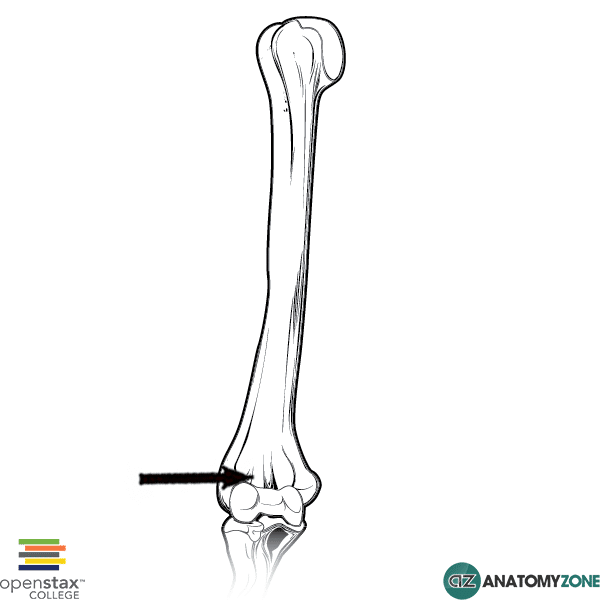Radial Fossa

The structure indicated is the radial fossa of the distal humerus.
The distal end of the humerus consists of several features:
- Condyle, consisting of the capitulum and trochlea
- Medial and lateral epicondyles
- Medial and lateral supracondylar ridges
- Radial fossa, coronoid fossa, olecranon fossa
A large central condyle which has two articular components – the capitulum which articulates with the radius, and the trochlea which articulates with the ulna. Either side of the humeral condyle, are two epicondyles, the medial and lateral epicondyles superior to which are the medial and lateral supracondylar ridges.
There are three fossae found distally on the humerus:
- Radial fossa
- Coronoid fossa
- Olecranon fossa
The radial fossa is located just above the capitulum, the coronoid fossa is located just above the trochlea. The olecranon fossa is located posteriorly on the humerus above the trochlea. When the forearm is flexed, the radial fossa accommodates the anterior aspect of the radial head, facilitating movement. Likewise, the coronoid fossae accommodates the coronoid process of the ulna during flexion of the forearm. The olecranon fossa, as the name suggests accommodates the apex of the olecranon when the elbow joint is in extension.
Learn more about the anatomy of the humerus in this anatomy tutorial.




















